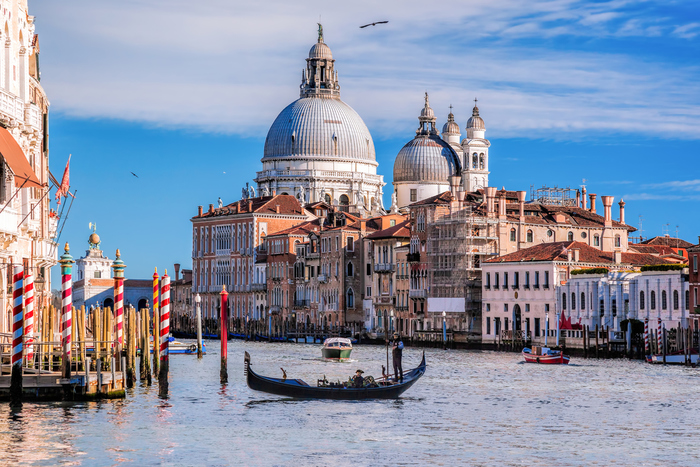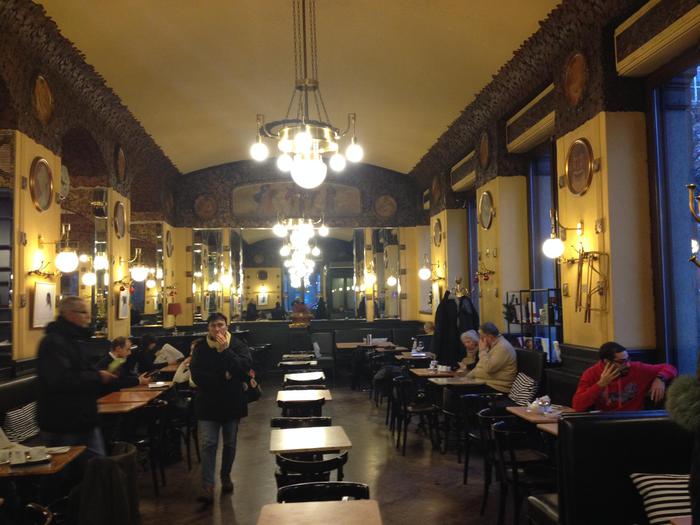This year there is
a historic anniversary for Venice
: 2021 in fact marks the 1600th year since the founding of the city.
The exact anniversary fell on March 25, the date of 421 in which according to some sources the first stone of the church of San Giacomo di Rialto was laid.
The official celebrations of the city will develop through events that will take place over the course of a year, and will thus end on March 25, 2022.
Venice, in addition to being considered one of the most romantic cities in the world, is also synonymous with history, art, technique and culture; for this reason the city and the lagoon that hosts it are part of the UNESCO World Heritage List. Over the centuries, painters, writers, inventors, and many other great minds have been inspired by this city; for example Shakespeare, who set one of his best known plays here, the
Merchant of Venice
.
Anyone wishing to join the celebrations of the cultural, artistic and literary heritage of Venice among the streets it can take therefore also has that of reading: here is a selection of some publications that celebrate the history that has seen it as a protagonist for centuries, the art that has been able to combine the traditions of distant places and the architectural techniques that over the centuries have given life to a city landscape that is unique in the world.
Through some precise numbers to which the distinctive characteristics of Venice and its past are linked, Alberto Toso Fei, expert essayist of this city, in Venice in numbers (Editoriale Programma) tells its history and legends. A particular path of discovery that begins with the numerous primates that Venice has been able to collect over the years, passing through the 120 doges who traced its direction and the precise 1100 years in which it was a Republic, to conclude with the curiosities related to the 256 public wells of the city, to the 1000 languages that met on the Venetian soil and to the 423 bridges that join the edges of the mainland. These and many other numbers are the ones that Fei uses to tell the unique story of the Venetian people in an original way, just in the year in which it is another important number,and that is the 1600 years, to be the protagonist of the Serenissima.
If Venice lives. A story without memory (Marsilio) by Mario Isneghi fits even more into the vein of the narrative of the multifaceted history of Venice. The cut with which Isneghi dedicates himself to the past of this city starts with a question: how many times has Venice died and then reborn? The events that make up the pages of the book in fact belie the imagination that sees Venice as a city linked to decline and on the contrary enhance the great vivacity of a population that over the centuries has always been able to reinvent itself and change shape. In this setting, the history and stories of Venice come to life in a path, which also analyzes the moments in which the inhabitants found themselves facing great difficulties.The result is a reflection that sees in the mistakes and successes of the past the road to the future of this city.
In
Venezia Minima
(Garzanti, translation by Giacomo Scotti)
Predrag Matvejevic
, the intellectual and writer of Croatian origin known in particular for the Mediterranean Breviary and for the reflections he has dedicated to this sea, dwells on the story of one of the cities that for centuries it was the protagonist of the travels, exchanges and trade that took place between the shores of the Mare Nostrum. Through the unique style of this writer, Venice is told starting from its details, its nuances, the smallnesses that are still today an integral part of its greatness and that sometimes it is difficult to glimpse when one dwells on the majestic images that this city has to offer.
Let's go back to history with a capital S with Giorgio Ravegnani's Life in Venice in the Middle Ages (il Mulino), an essay that leads to the discovery of how life unfolded in Venice in one of the historical periods in which it was the protagonist. Thanks to the details of the sources that have survived, Ravegnani is able to paint a complete picture of the habits of the Venetian population, ranging from reports of the food and clothing of its inhabitants to describing the functioning of justice in the city. From this text capable of arousing the reader's curiosity, many particularities of Venice emerge in recent years, such as the figure of the Doge, the different roles assumed by women in the city,the trades exercised in its streets and many other characteristics that have helped to trace its unique path in history.
And it is precisely the female population of Venice that is the protagonist of History of Venice, city of women. Guide to the times, places and female presences (Marsilio and Feltrinelli) by Tiziana Plebani. In this book Venice is told through the story of some women whose life is intertwined with the events of this city. In particular, there is space for stories of female protagonism in the political, public and work spheres, which as a whole seem to trace a fresco of Venice as a place where women have often managed to find their own space, as artists or exponents of culture, as workers to artisans and also as noble and skilled politicians.
Venice is one of the most visited cities in the world, and in the pre-pandemic period the flow of tourists who admired it could lead us to believe that by now there were no more places to discover.
Lara Pavanetto in Venice that nobody knows (Newton Compton) instead leads the reader to discover the still hidden sides of this centuries-old city, corners that, as often happens, are among the most representative of the true character of a city. Bringing us with words on a visit in the name of a hidden Venice, Pavanetto also leaves room for the peculiar curiosities that accompany these places, on a journey that mixes with the history, art and mysteries of this city.
Like many cities rich in art and culture, Venice too was a much loved subject by artists, whether they were painters or novelists, photographers or directors, musicians or poets. Graziano Graziani, in A Venice. From Brodiskij to Bolaño (Giulio Perrone publisher) retraces the places that poets of all eras have loved most Venice, in some cases enhancing its fascinating elegance and in others its romantic melancholy atmosphere. Among the most famous poets we find Ezra Pound, Lord Byron, and Borges and Bolaño but there is no lack of contemporaries such as Yang Lian or Ngugi wa Thiong'o and many other poets from every corner of the Earth. In Venice it is therefore a literary journey that allows you to discover the city through the eyes of some of the most talented poets who have crossed its streets and canals.








